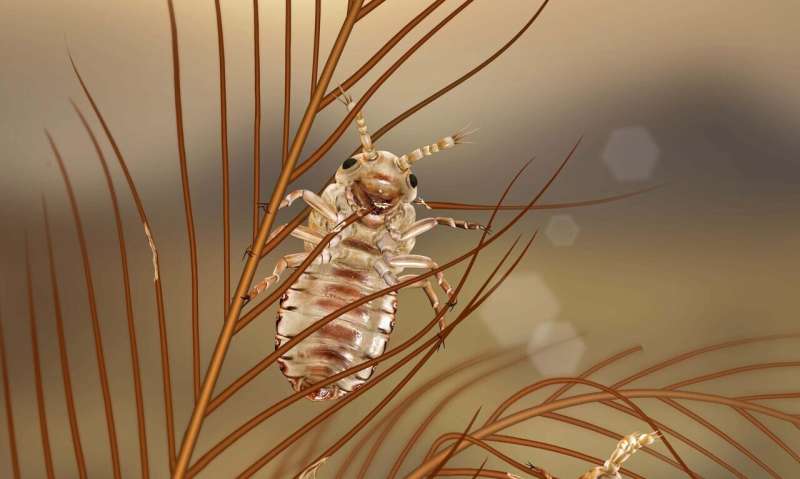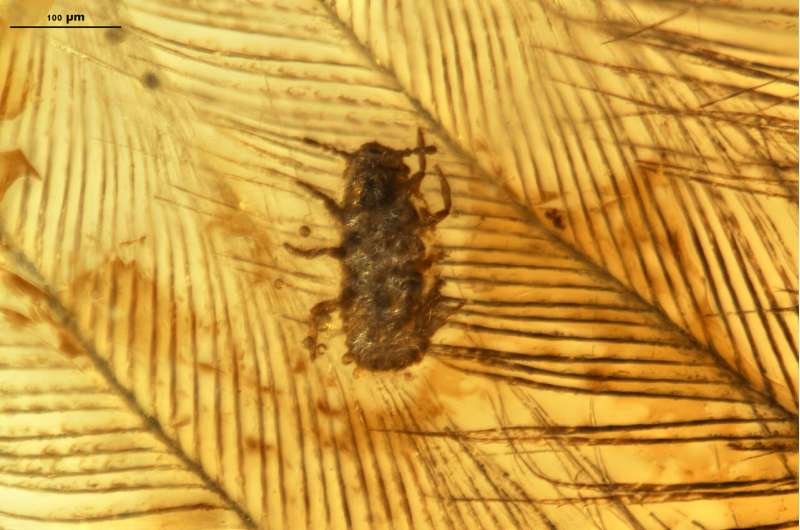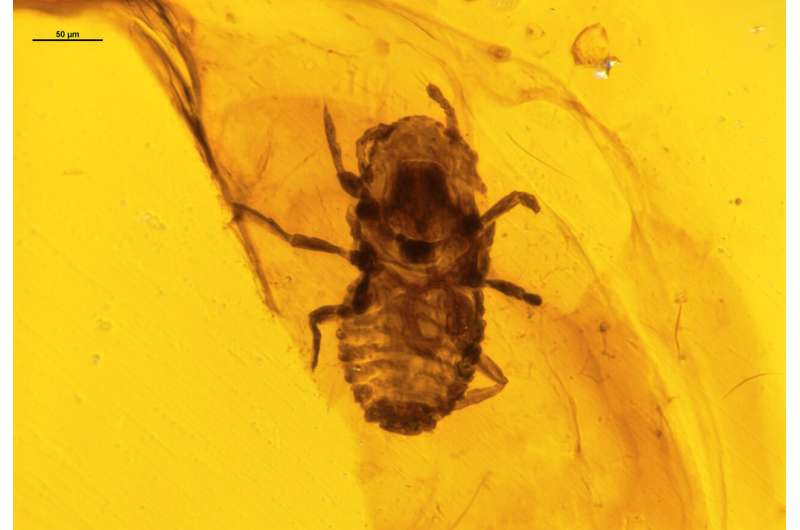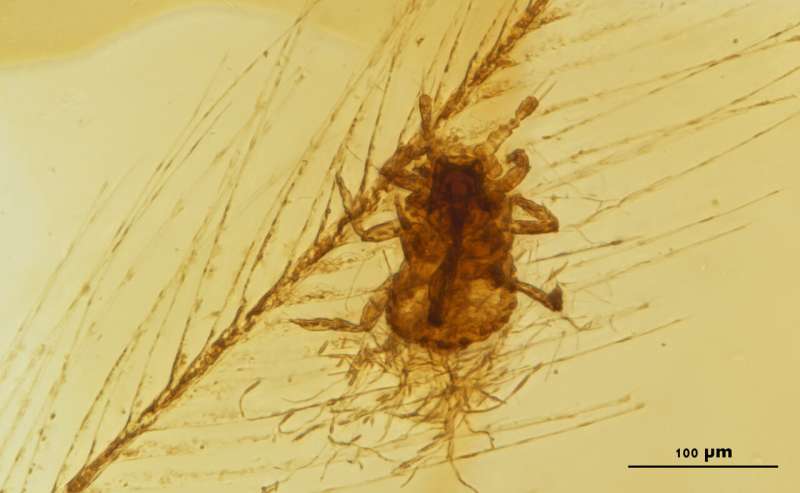Artist‘s reconstruction of Mesophthirus engeli of elder development stage feeding on the dinosaur feathers from mid-Cretaceous amber. Credit: Chen Wang
A team of researchers affiliated with several institutions in China, the U.S. and Russia has found evidence of ancient lice-like insects that fed on dinosaur feathers. In their paper published in the journal Nature Communications, the group describes their study of two pieces of amber found in Myanmar and what they learned from them.
Prior research has shown that modern birds are plagued by a wide variety of pests, some of which are parasitic. In this new effort, the researchers found that feathered dinosaurs were similarly bothered by a parasitic pest that looked remarkably similar to a modern louse. They were studying two pieces of amber that were discovered in Myanmar—each had insect nymphs trapped inside of it. Testing of the amber showed it to be approximately 100 million years old, putting it in the mid-Cretaceous.
The researchers found one new nymph species that stood out—a 2-mm long wingless invertebrate with short, stubby antennae, claws on its feet, sharp teeth, a wide body and a strong-looking mouth. It very much resembled a modern louse. The researchers promptly named it Mesophthirus engeli.
The researchers report that they found something else that was interesting—the ancient louse-like creature was clinging to an equally ancient feather. And there was damage near the feather's end, but not near its base. The damage was very similar to that caused by modern lice as they consume a feather. The researchers suggest this indicates that M. engeli was an ectoparasite—a type of parasite that lives on the outside of its host's body. That finding led them to conclude that the specimen they found was an example of the earliest insects feeding on feathers—prior to this find, the earliest known creature to do the same was from 44 million years ago. The new find pushes the date back approximately 50 million years.
The researchers note that modern birds are able to replace feathers damaged by lice or other pests through molting—they suggest that ancient creatures such as M. engeli feasting on feathers may have led to the evolution of molting in birds.
-
Paratype CNU-MA2016010 of Mesophthirus angeli crawling on the dinosaur feathers in mid-Cretaceous amber. Credit: Taiping Gao
-
Holotype CNU-MA2016009 of Mesophthirus angeli feeding on dinosaur feathers in mid-Cretaceous amber. Credit: Taiping Gao
-
Paratype CNU-MA2016001 of Mesophthirus angeli feeding on dinosaur feathers in mid-Cretaceous amber. Credit: Taiping Gao
More information: Taiping Gao et al. New insects feeding on dinosaur feathers in mid-Cretaceous amber, Nature Communications (2019). DOI: 10.1038/s41467-019-13516-4
Journal information: Nature Communications
© 2019 Science X Network



























